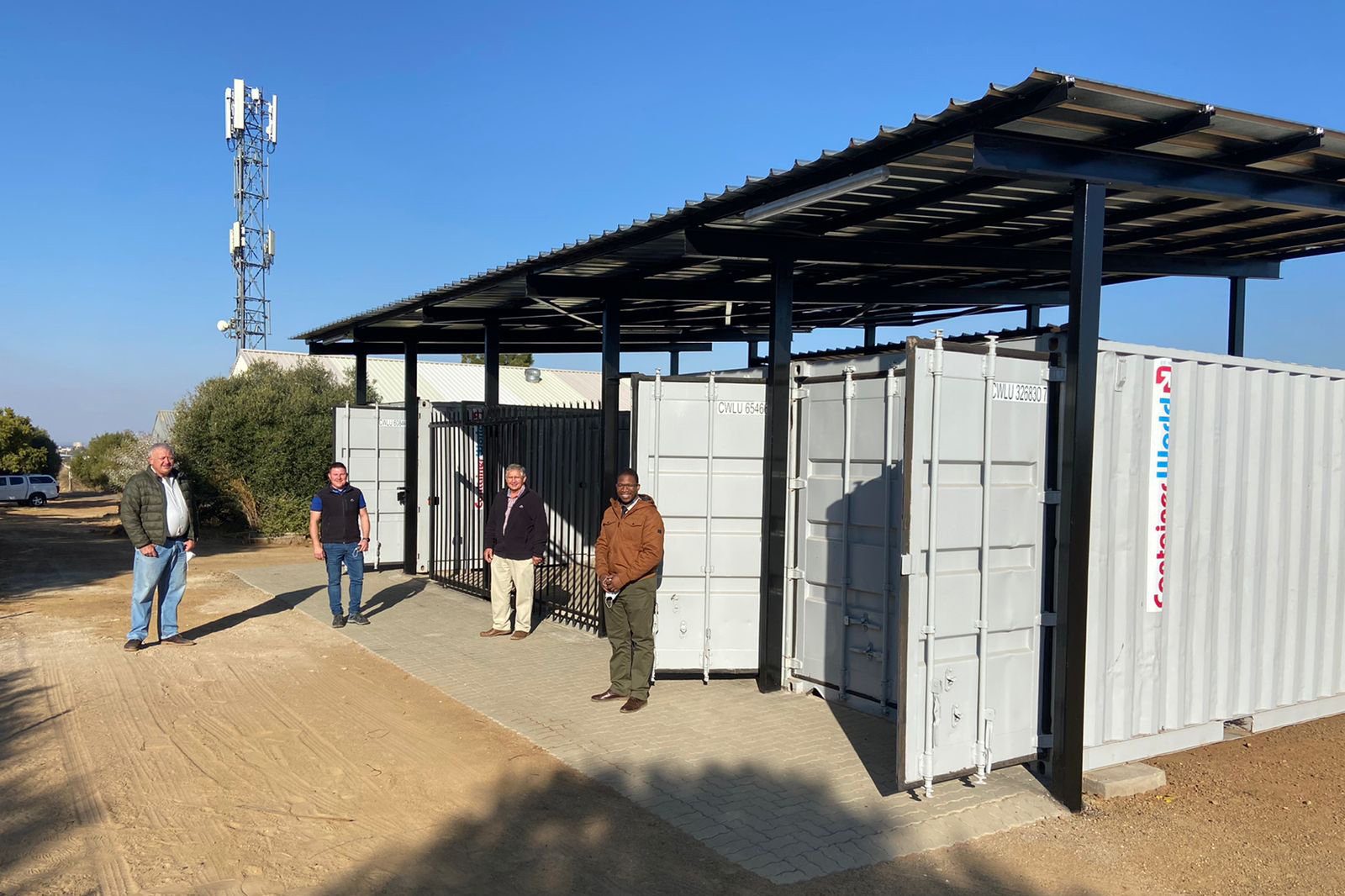12 August 2021
|
Story Leonie Bolleurs
|
Photo Supplied
 Tinus Viljoen (second from the left) is responsible for waste management at the university. Here he is pictured at the new chemical waste facility on the western side of the Bloemfontein Campus. With him, on his left, is Nico Janse van Rensburg, Senior Director, University Estates; Prof Danie Vermeulen, Dean of the Faculty of Natural and Agricultural Sciences; and on the far right is Benedict Mochesela, officer at University Estates.
Tinus Viljoen (second from the left) is responsible for waste management at the university. Here he is pictured at the new chemical waste facility on the western side of the Bloemfontein Campus. With him, on his left, is Nico Janse van Rensburg, Senior Director, University Estates; Prof Danie Vermeulen, Dean of the Faculty of Natural and Agricultural Sciences; and on the far right is Benedict Mochesela, officer at University Estates.
A new chemical waste facility on the western side of the Bloemfontein Campus started functioning in July 2021 and will enhance the safe storage of hazardous materials on campus.
Since the safety of its staff and students are a key priority for the university, as stipulated in its strategic plan, a facility such as this plays an essential role in reducing any health risks and even the possibility of an explosion.
Tinus Viljoen, a Lecturer in the
Department of Genetics, concurs that this facility makes the university a safer place because there are less toxic and flammable waste lying around in the labs.
Besides his role as lecturer, he is responsible for waste management, including the collection of hazardous waste internally, classifying it, and arranging for it to be collected by accredited waste companies.
A safer space
Waste previously stored in the Genetics Building is now kept at the new facility. Viljoen is of the opinion that this new space is safer because fewer students and staff have access to the western campus. “The chemical waste tends to smell, and on this part of the campus it is out of the way,” he says.
He also says that it helps to have a central place to store the waste, because of logistical reasons. “It makes the overall waste management easier.”
It is mainly inorganic and organic liquid/solid waste, contaminated glass, contaminated solids (e.g., filter paper and gloves), acid waste, and expired chemicals that are stored at the facility.
This facility makes the university a safer place because there are less toxic and flammable waste lying around in the labs. – Tinus Viljoen
Adhering to legislation
He explains that he is notified by departments in the Faculty of Natural and Agricultural Sciences when they have waste to collect and that he then collects it on Fridays.
Viljoen continues: “The chemical waste is then classified according to the various waste streams and stored in large 210 l drums. When the drums are full, I contact an accredited hazardous waste company to remove, transport, and dispose of the various waste according to strict legislation, constituting the National Environmental Management Act (Act 107 of 1998), the National Environmental Management: Waste Act, 2008 (Act 59 of 2008), the Hazardous Substances Act (Act 5 of 1973), and the National Road Traffic Act, 93 of 1996 (NRTA).”
“The majority of the waste is transported to a hazardous landfill in Gauteng and the rest are incinerated,” he concludes.